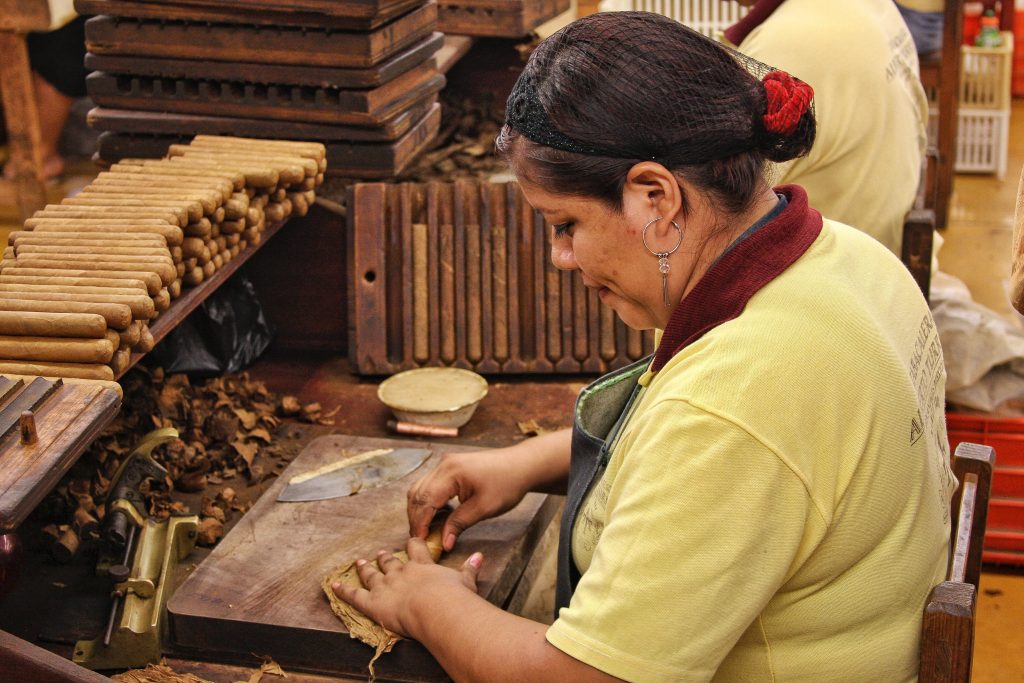
Read also: IoT Development
In the era of the fourth industrial revolution, the Internet of Things (IoT) has played a significant role in transforming the landscape of manufacturing industries. One fascinating sector to explore is the application of this technology in Indonesian kretek cigarette factories, where innovation meets the richness of cultural heritage.
Contents
Understanding IoT and Manufacturing Transformation
The Internet of Things (IoT) is a concept in which physical devices, such as sensors, hardware, and software, are interconnected through the internet. In the context of manufacturing, this provides opportunities to enhance efficiency, security, and control over the production process.
Implementation of IoT in Kretek Cigarette Factories
Smart Sensors for Production Process Monitoring

Read also: Startup & SME Industry
The implementation of IoT in kretek cigarette factories involves the use of smart sensors. These sensors are placed at various points in the production process, from tobacco preparation to final packaging. With this, every step can be monitored in real-time.
Machine-to-Machine (M2M) Communication

Read also: Machine Learning
In kretek cigarette factories implementing IoT, machines can communicate with each other without human intervention. For example, a filter-making machine can inform the packaging machine that the filter supplies are running low, triggering an automatic order for new raw materials.
Data-Driven Preventive Maintenance

Read also: Data Center Industry
With data collected by sensors, factories can implement preventive maintenance on their equipment. For instance, if a sensor detects a machine approaching its capacity limit, the factory can plan maintenance before more serious damage occurs.
Benefits of IoT Implementation in Kretek Cigarette Factories
Improved Operational Efficiency

Read also: Product Design Development
IoT implementation optimizes production efficiency by reducing machine downtime, enhancing coordination between departments, and minimizing human errors. This directly impacts increased productivity.
Assurance of Higher Product Quality

Read also: IoT Development
Through connected sensors, the factory can monitor production conditions accurately. This ensures that each cigarette meets strict quality standards, boosting consumer confidence in the product.
Efficient Stock Management

Read also: IoT Development
With an IoT-based system, the factory can manage raw material and finished product stocks more efficiently. Automatic alerts and real-time stock monitoring ensure a smooth supply chain.
Challenges and Cultural Changes
Integration with Traditional Work Culture

Read also: Artificial Intelligence
While bringing technological advancements, implementing IoT in kretek cigarette factories requires careful integration with traditional work culture. Training and education for workers are key to success in understanding and embracing these changes.
Data Protection and Security

Read also: Manufacturing Industry
With increased connectivity, concerns about data protection and security become more critical. Factories must ensure that their systems are secure from cyber threats and give high priority to information security.
Sustainability of Cultural Heritage
Preserving Human Involvement in the Production Process

Read also: Software Development
Despite increasing automation, human workers continue to play a crucial role in kretek cigarette factories. Human involvement in supervision, machine maintenance, and decision-making remains irreplaceable.
Appreciation for Traditional Values

Read also: Product Design Development
In adopting modern technology, kretek cigarette factories do not lose their cultural identity. Instead, technology is implemented with consideration and appreciation for traditional values in every aspect of production.
Conclusion
The implementation of the Internet of Things in kretek cigarette factories is a significant step toward greater efficiency and quality. Despite technological transformation, these factories maintain their cultural roots, creating a unique balance between modern innovation and cherished cultural heritage. In this dynamic, Indonesia continues to witness the development of an industry that preserves the richness of its heritage.



